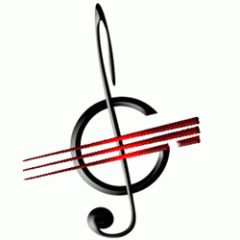Last time round I explained how sus chords are constructed.
Here I’m going to show you a little trick on how to voice (play) any 7sus chord quite easily on the piano, and you’ll get a nice, full sound.
I’ll explain this in the context of a C7sus:
Take the root (bottom note), so in this case a C and play it in the left hand. Then look at the root in the right hand again, but go down two keys, So C to B to Bb. Now construct a major triad on this note, so a Bb major triad. Then play this with the C root in the left hand, and you’ll get a really nice sounding voicing. (Note that this chord includes a 4th (F) as well as a 2nd (D), but no 5th (G)):
As this chord is made up of a root and a completely separate major chord in its own right you can also write this chord as a slash chord: Bb/C.
Let’s pretend we have a slightly more difficult chord, say an Eb7sus.
So play the root (Eb) in the left hand, then go down two keys in the right hand, so Eb to D to Db, then construct a major chord on the Db, so a Db major triad and put it all together and you should get this:
The nice thing about sus chords and this type of voicing them is that you can even shift these around to different keys at random and get really nice textures. Here is an example – you can try this yourself by just shifting this voicing around the piano:

Audio clip: Adobe Flash Player (version 9 or above) is required to play this audio clip. Download the latest version here. You also need to have JavaScript enabled in your browser.
Lincoln Jaeger












